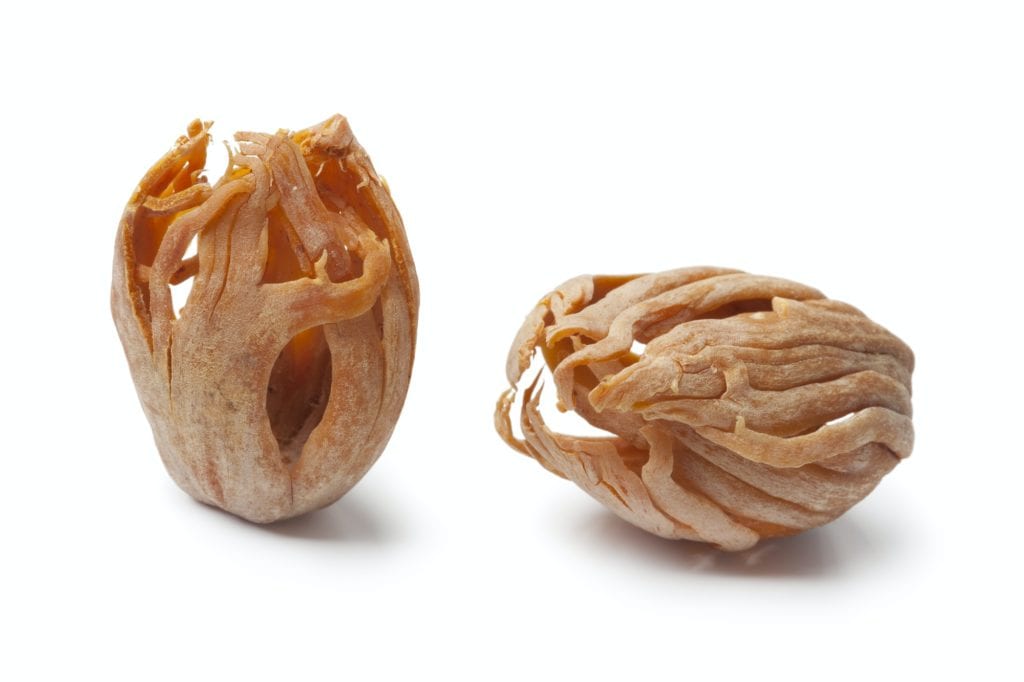
Mace, in its original form, is the red lacy covering (the aril) that surrounds the hard, black shell of the nutmeg.
It is removed from the nutmeg and is dried when it turns to a light brown colour.
Mace tastes similar to nutmeg but in addition can be described as a combination of cinnamon and pepper. Its use should be sparing when ground due to its strong taste.
It is sold either in whole pieces called blades, or more commonly it is ground to a rough powder.
Its delicate flavour means that it should be stored in a cool and dry environment and used as quickly as possible.
Background
Romans are thought to have been amongst the first civilisations to trade mace and nutmeg.
The plant (myristica fragans) originates from the Banda Islands in Indonesia. The plant bears peach type fruits that contain the seeds of the nutmeg that is coated with mace.
It is traditionally more expensive than nutmeg due to the lesser yield of the surrounding covering.
Many spice blends from Southeast Asia and the Middle East will contain mace. It is often a component of curry powder, garam masala and ras el hanout.
Uses for mace
Mace should be used sparing when it has been ground due to its strong taste.
Nutmeg can be used as a substitute for mace.
If cooked for a long time mace can become bitter and so is best added to a dish at the end of cooking.
Mace is popularly used as a spice for baked goods such as cakes and biscuits.
It works well with creamy sauces.
It can be added to meat marinades, being particularly good with chicken or pork as well as in curries and stews.
Medicinal uses
Mace is known as an antioxidant and contain minerals and essential oils. It is high in vitamin A and C and contains calcium, iron and magnesium.
It is widely used in traditional Indian medicine for the treatment of diarrhoea, nausea and excess gas.
Mace is also used for reliving toothache and as a local anaesthetic, and is said to help to reduce muscle pain, rheumatism and to relieve eczema.

